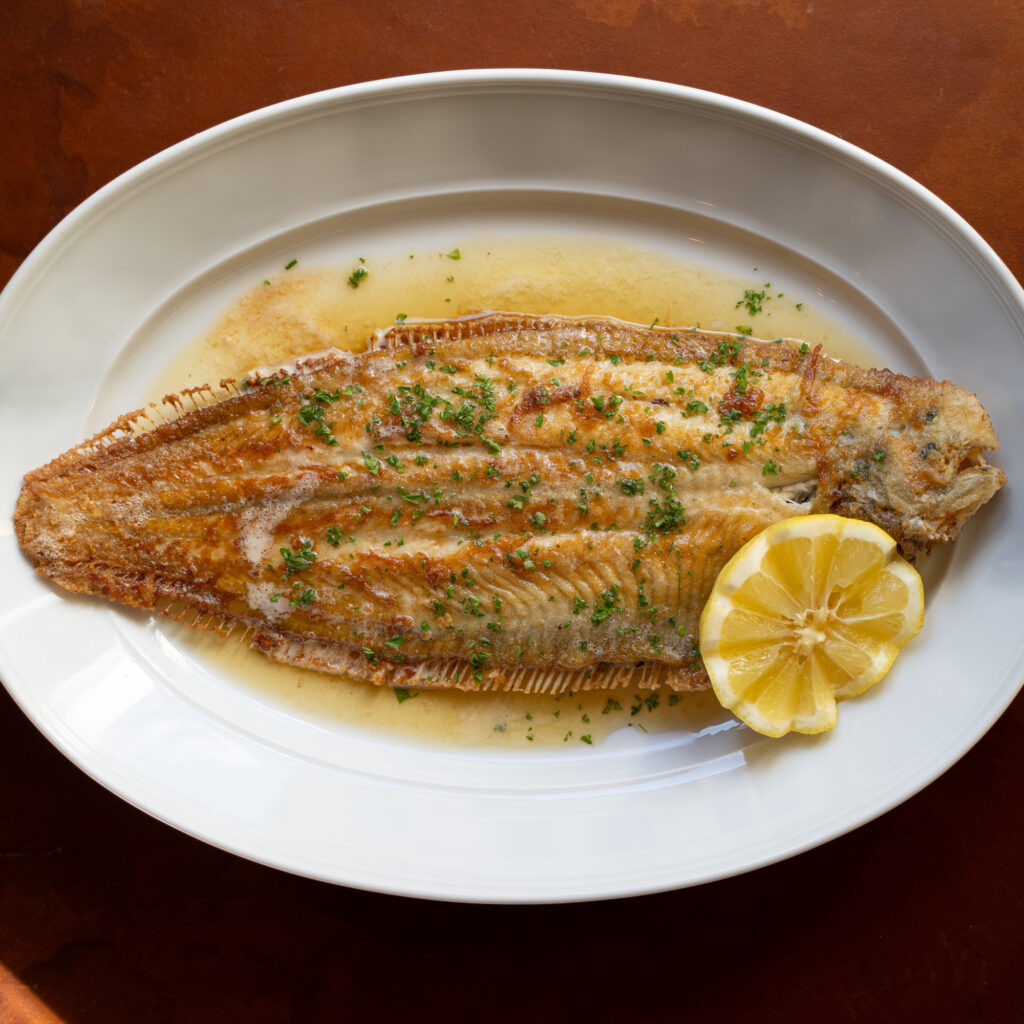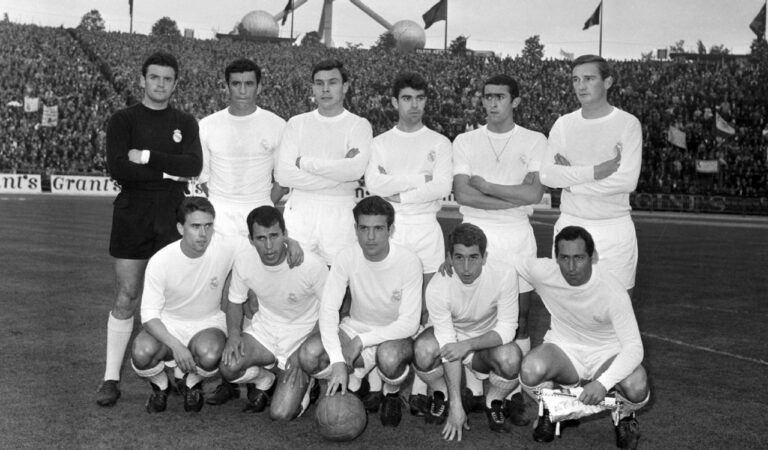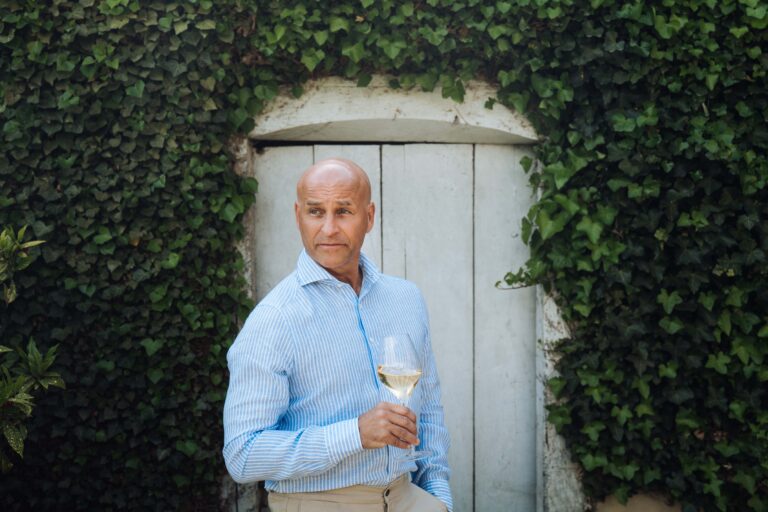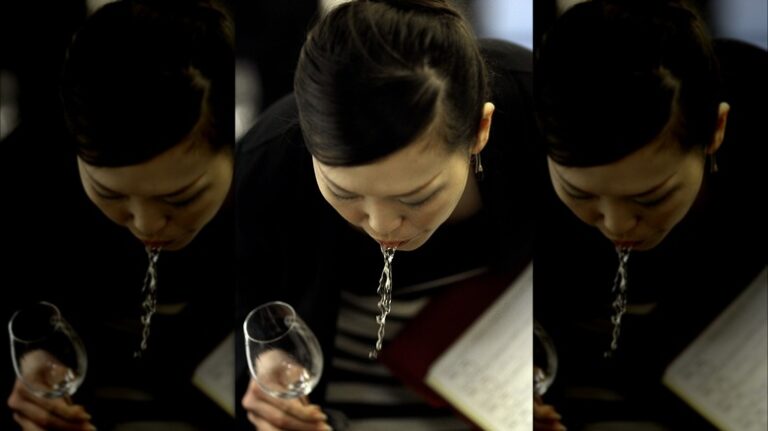TheChampagneSommelier went down in to the wine cellar to search for a champagne to Sole Meunière. [ read the full champagne story ]
Estimated reading time: 8 minutes

An Audacious Guide to the Gastronomic Certainty
One must occasionally tolerate the vulgar simplicity of perfection. We, the illuminated few who gather under the gilded banner of Champagne Club, by Richard Juhlin rarely condescend to the obvious. We chase the obscure lieu-dit, the microscopic production, the vintage so challenging it separates the men from the muddlers. But today, we pause our relentless pursuit of the impossible to contemplate a pairing so fundamentally, ridiculously, and immutably right that it almost insults the intelligence.
I speak, of course, of Sole Meunière and Champagne.
It is a coupling so classical it’s practically wallpaper, a gastronomic certainty that hangs in the air like old money or inherited self-regard. Yet, like all things universally accepted, its very obviousness obscures its profound, beautiful, and utterly merciless brilliance. Most people, bless their simple palates, simply get it wrong. They stumble into mediocrity with the correct elements, achieving a pleasing mediocrity rather than the blinding epiphany that is the duo’s birthright.
Let us, then, peel back the layers of this culinary certainty—from its humble, flour-dusted origins to the final, transcendent pairing—and prescribe the precise Champagne required to elevate the common to the divine. Anything less would be an act of gastronomic vandalism.
I. The Solemn History of the Humble: À La Meunière
The dish itself is a study in French insouciance: an architectural feat of deliciousness constructed from three entirely commonplace elements. Sole Meunière—or Sole à la Meunière, if you insist on the full, pretentious flourish—is merely the “Miller’s Wife’s” style. A name that instantly conjures up a scene of bucolic, pre-industrial simplicity; a scene, mind you, that is utterly misleading.
The story goes that the fish, usually the regal Dover Sole, is lightly, almost flirtatiously, dusted in flour—a necessary flourish, a miller’s conceit—then plunged into a bath of sputtering, clarified butter. It is pan-fried until the surface achieves that perfect, caramelised kiss of bronze, its delicate, almost non-existent flavour gently augmented.
The coup de grâce, the finishing touch that separates this dish from mere fried fish, is the sauce. It is not some complex, multi-stage reduction requiring a culinary degree. No, it is simply beurre noisette—nut-brown butter—where the milk solids have toasted themselves into a profound, nutty umami. A final splash of lemon juice provides the necessary, civilised counterpoint, and a scattering of parsley serves as the obligatory, green nod to health we all know is entirely performative.
This dish, my friends, is no peasant’s supper. It was a favourite of Louis XIV, the Sun King, a monarch whose appetite for opulence was matched only by his strategic genius. And later, it was the first culinary revelation for Julia Child, whose life was irrevocably altered by its simple perfection in a restaurant in Rouen. To misunderstand its history is to miss its point: Sole Meunière is the ultimate expression of how simplicity, executed perfectly, becomes aristocracy. It is a triad of delicate protein, profound fat, and electric acid.
II. The Anatomy of an Inevitable Pairing
The pairing of this dish with Champagne is not a happy accident; it is gastronomic destiny. It is the wine world’s ultimate demonstration of the fundamental law of food and wine: Acidity is the foil to Fat.
Observe the plate: it is dominated by the lavish richness of the beurre noisette. The butter, while exquisite, is a heavy cloak. A lesser wine—a flabby, low-acid Chardonnay, or worse, some aggressively fruity New World contraption—would simply be swallowed whole, rendering the entire meal a greasy, suffocating affair.

The true marvel of Champagne, its genius, lies not in its bubbles, which are merely theatrics, but in its ruthless, crystalline acidity. The wine, born from chalky soil in the coldest vineyards of France, possesses an acidity so keen, so unapologetic, that it is the perfect palate-cleanser.
- The Acid-Fat Dynamic: Each sip of Champagne—particularly a high-acid, Chardonnay-driven style—acts as a precision laser. Its bright, tartaric acidity slices through the film of butter left by the Sole Meunière, instantly refreshing the palate and preparing it for the next delicious, buttery morsel. This is not mere drinking; it is a palate reset button, allowing the delicate flavour of the sole itself to shine through again and again, unburdened by residual fat.
- The Effervescent Cleanser: The bubbles, or effervescence, play a secondary, yet vital, role. They are the scrub brush, the tiny, explosive agents that physically lift the fat from the tongue’s surface. It is a textural synergy: the smooth, delicate texture of the sole and the aggressive, fizzy texture of the wine. It is a small, polite war waged in the mouth, and both sides win.
- The Lees-Driven Umami: The truly sophisticated interplay occurs when you introduce a Champagne with extended aging on the lees. This extended contact with the dead yeast cells imparts complex notes of brioche, toast, and nuts. This umami-rich depth mirrors, amplifies, and ultimately complements the nutty, toasted notes of the beurre noisette. The common ground is found not just in flavour, but in a shared, complex richness.
III. The Sommelier’s Dictate: Moving Beyond Brut Non-Vintage
And now we arrive at the point where the commonality ends and true inspiration must take over. Any fool can tell you a Brut Non-Vintage will work. A non-vintage, however, is a mere umbrella of correctness. We demand a Rainier-level downpour of glorious specificity.
If you are going to commit to this magnificent pairing, you must commit without reservation. Forget the obvious. Here are my prescriptions—my dictates—for the only ways to approach the Sole Meunière with an adult palate.
Prescription 1: The Purist’s Blade
This pairing is for the guest who appreciates precision, whose soul recoils at unnecessary sweetness, and who worships at the altar of the terroir.
The Wine: A Grand Cru Blanc de Blancs Extra Brut or Brut Nature.
- Why: We are isolating the core components of the pairing. The Chardonnay from the Côte des Blancs (Le Mesnil, Avize, Oger) possesses a savage, chalk-driven minerality—a palpable sense of wet stone—that acts like a mineral counterweight to the delicate fish. The Zero Dosage or Extra Brut status means there is no sugar to muddy the electric acidity.
- The Flavour Profile: Think laser-beam lemon, green apple, and a fierce, bone-dry purity. This wine cleanses. It is the ascetic, the puritan of the pairing.
- The Inspired Producer: Pierre Péters Cuvée Spéciale Les Chétillons (Extra Brut) or a Larmandier-Bernier Terre de Vertus (Non-Dosé). These are not merely wines; they are statements of uncompromising purity. To serve anything less would be an insult to the fish’s quiet dignity.
Prescription 2: The Hedonist’s Embrace
This pairing is for the guest who understands that life is short, butter is delicious, and complexity is the ultimate spice. We are matching the toasted richness of the beurre noisette with a wine that has achieved tertiary glory.
The Wine: A Vintage Champagne with Significant Lees Ageing (8+ years).
- Why: We are moving beyond simple cleansing and engaging in complementary depth. The time spent on the lees has developed those wonderful, oxidative notes of toasted hazelnut, brioche, dried apricot, and a slight, intriguing hint of mushroom. These flavours mirror and amplify the beurre noisette. The vintage designation ensures a necessary power and concentration that can stand up to the richness of the dish.
- The Flavour Profile: Rich, broad, powerful, and nutty, yet still retaining the underlying Champagne acidity. It is the sophisticated older sibling.
- The Inspired Producer: A well-aged Bollinger La Grande Année or a Dom Ruinart Blanc de Blancs. These wines carry the texture and complexity of a great white Burgundy but with the vital, bubbling effervescence that separates them from the predictable. This is a pairing that whispers, “I’ve seen things, I know things, and now I shall teach you the true meaning of delicious.”
Prescription 3: The Radical’s Rosé
This pairing is for the truly evolved palate, the iconoclast who appreciates a subtle tension. Rosé Champagne is often relegated to the aperitif, an act of sheer ignorance we must correct.
The Wine: A Structured, Pinot-Dominated Brut Rosé (Saignée method preferred).
- Why: A serious Rosé, one made with a brief maceration (Saignée) rather than simple blending, carries a delicate, savoury grip—a ghost of tannin and a lovely hint of red fruit (cranberry, wild strawberry). This subtle structure provides an unexpected textural foil to the delicate fish, while the inherent acidity of the Champagne maintains the necessary cleansing action. It is a slight tilt of the axis, a moment of delicious, rebellious friction.
- The Flavour Profile: Mineral, dry, with a refreshing red fruit lift. It offers complexity without weight.
- The Inspired Producer: Billecart-Salmon Cuvée Elisabeth Salmon Rosé or a Vilmart & Cie Cuvée Rubis. These are Rosés of purpose, not mere frivolous colour.
Conclusion: The Certainty of Perfection
The pairing of Sole Meunière and Champagne is, I submit, the closest we can come to a mathematical proof of gastronomic perfection. It is a triumph of French culinary logic, where the simplest elements—butter, lemon, and a bubble—combine to create an experience far greater than the sum of its parts.
The sole provides the canvas, the butter provides the soul, and the Champagne provides the acid-etched conscience required to enjoy the whole decadent affair without remorse. The choice is yours: will you choose the umbrella of correctness with a mundane Brut NV, or will you seize the moment, summon a bottle of true character, and perform this small, delicious ritual with the audacity it deserves?
Go forth. Do not be timid. And for God’s sake, make sure the butter is brown and the wine is cold. The Miller’s Wife—and I—expect nothing less.






